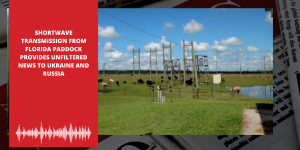
Unbeknown to many, MIAMI based broadcaster WRMI, one of the largest shortwave radio operations in the world, has a huge shortwave antenna array in a paddock north of Lake Okeechobee in Central Florida. This shortwave broadcaster is able to beam high power signals to Europe, when it is needed most!!
As we know, shortwave was mostly used during the world wars as a means of communication and propaganda distribution. Many countries including U.S. Services like the Voice of America and Radio Free Europe have scaled back shortwave services due to the rise in TV and internet services. However, since the invasion of Ukraine, Russia has shut down journalism as we know it, meaning those sources have been either blocked or heavily filtered. Shortwave radio is now the only way the Russian population can access unbiased reporting of the current conflict.
As the crisis unfolds in Russia and Ukraine you will see more and more people tune in once again to their shortwave radios to access unfiltered news and events.
Russia is “attempting to pass a law making journalism essentially illegal, imposing a 15-year criminal penalty” according to Kate Neiswender, one of the teams organising funding for news programming for Russian audiences.
Neiswender and fellow former journalists formed a fundraiser to beam news into Russia, where state-controlled media, at best, does not tell the true story of the invasion and many Russian citizens have no clue about the severity of the invasion.
Link below to donate.

So, back to this massive shortwave radio antenna in a Florida paddock… The general manager of Miami-based WRMI, Jeff White says “We have 14, 100,000-watt transmitters and 23 antennas beaming to all parts of the world,”
Why is it important? Thanks to funding it is currently providing much needed unfiltered information and news of the invasion, beamed over in Russian, Ukrainian and even in English with no censorship.
There is also no shortage of shortwave radios and radio listeners in Russia so this can be accessed fairly easily.
This highlights the importance of shortwave radio in the modern age.
Click here if you are interested in contributing to the fundraising efforts to keep uncensored news flowing into Russia and Ukraine.
Information source thanks to https://miami.cbslocal.com/ WRMI
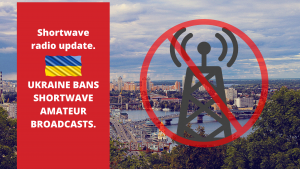
The world watches as the crisis in Ukraine unfolds. The Ukrainian government has imposed a state of emergency. This state of emergency allows the authorities to temporarily limit the public’s constitutional rights.
This includes a ban on producing and spreading information that may “destabilise the situation as well as a ban on amateur radio communications during the current conflict with Russia.
To supplement shortwave broadcasts to that country, shortwave broadcaster WRMI (USA based) initially resumed its relays of the daily English language broadcast of Radio Ukraine International, the official overseas service of Ukrainian Radio. (This information is most probably provided to WRMI from the Ukraine via secure internet). Subsequent to this, WRMI reverted to broadcasting in Ukranian.
RUI (Radio Ukraine International) can be heard daily, except Friday, at 1200-1230 UTC on 5010 kHz.
Historically shortwave radio has been banned in Poland and Russia during times of conflict despite it being a critical source of emergency communication.
Our thoughts and prayers are with those currently in conflict.
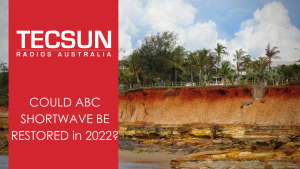
A controversial decision in 2017 lead to the ABC turning off its domestic shortwave radio service, much to the disappointment and anger of remote listeners. It’s reasoning for turning off the shortwave broadcasts was that it would only affect a small number of listeners and in fact save operating costs of $1.9M, which could be re-invested in providing infrastructure of digital services located in populated regional areas.
Many industry groups were outraged, particularly in remote areas of the Northern Territory where residents had come to rely on the service as their only regular source of news and entertainment.
In February 2011, cyclone Yasi crossed the Australian east coast between Cairns and Townsville, causing enormous damage and knocking out all local communications.
Radio Australia carried ABC Queensland coverage of the storm, which was extraordinary.
The ABC shortwave transmitter at Shepparton Victoria was activated on 9710 and 6080 kHz, and the giant curtain array antenna pointed to Far North Queensland. This broadcast provided emergency information, sheltering information, updates, and calls from listeners in the midst of the storm.
The enormous signal could easily be heard in Sydney and Brisbane on any shortwave radio.
“The ABC expansion of its digital platforms in capital cities provides no benefits to those Australians living in remote areas, and the withdrawal of domestic shortwave services has been seen as a real kick in the guts”.
“What people take for granted in the cities is a luxury for those living in the bush, who rely on the HF shortwave radio services as a reliable source of news, weather information, and entertainment, There are numerous examples where ABC domestic shortwave has been the only source of information to remote area residents during a weather-related emergencies,” said Garry Cratt owner of Tecsun Radios Australia, who made a submission to government at the time.
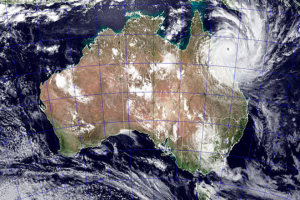
Cyclone Yasi approaching the east coast of Australia, Feb 2 2011.
Photo source: Bureau of Meteorology
The federal Labor party has announced that if elected next year, they will provide the ABC with $2M in funding to re-establish the shortwave funding across the territory.
Federal Member for Solomon Luke Gosling mentioned that he was approached by community groups who were angry at the axing of ABC shortwave and said” when shortwave was cut there was a lot of angst, so it will be a good thing to bring it back to keep people on the land and waters connected. Many thousands will benefit from this [bringing back shortwave]”
Article source: NT Country hour, ABC News, Bureau of Meteorology.
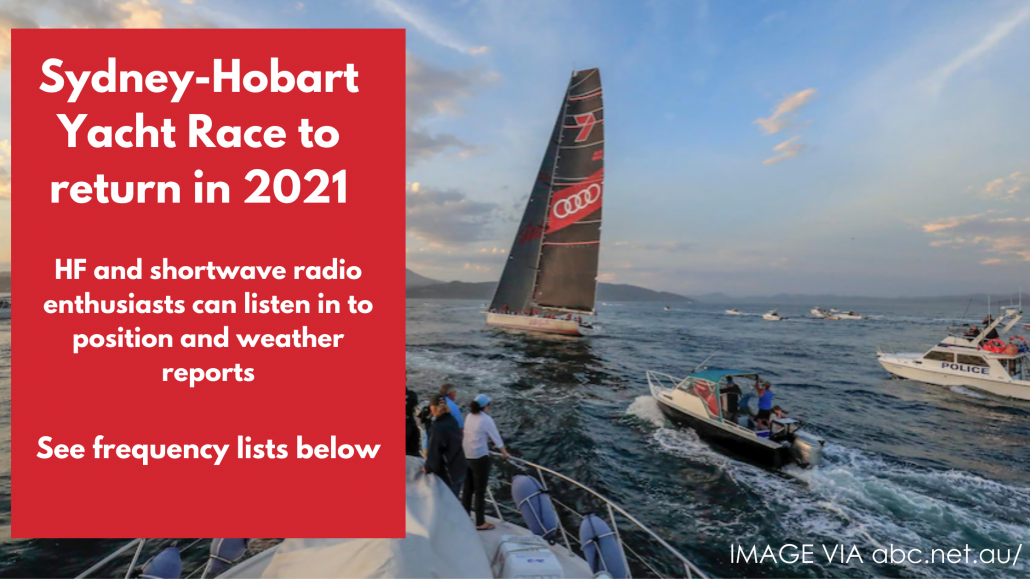
 Yes, it is the season of giving! With holidays coming up it is also the time for exploring your hobbies and creating your own space to do more of the things you enjoy
Yes, it is the season of giving! With holidays coming up it is also the time for exploring your hobbies and creating your own space to do more of the things you enjoy
If this year has taught us anything, making sure your home is as comfortable as possible is paramount.
If you have dabbled in shortwave in the past and enjoyed it, perhaps now is the time to invest in this fantastic hobby and expand your horizons!!
We have created some fantastic bundle packs that are not only great as a gift idea but are also great suggestions to set yourself up for the years ahead with some awesome radio listening!! Receive huge discounts when you buy these products at the same time, simply add items to the cart and use the above code at checkout to get your discount!Welcome to the world of internet radio.
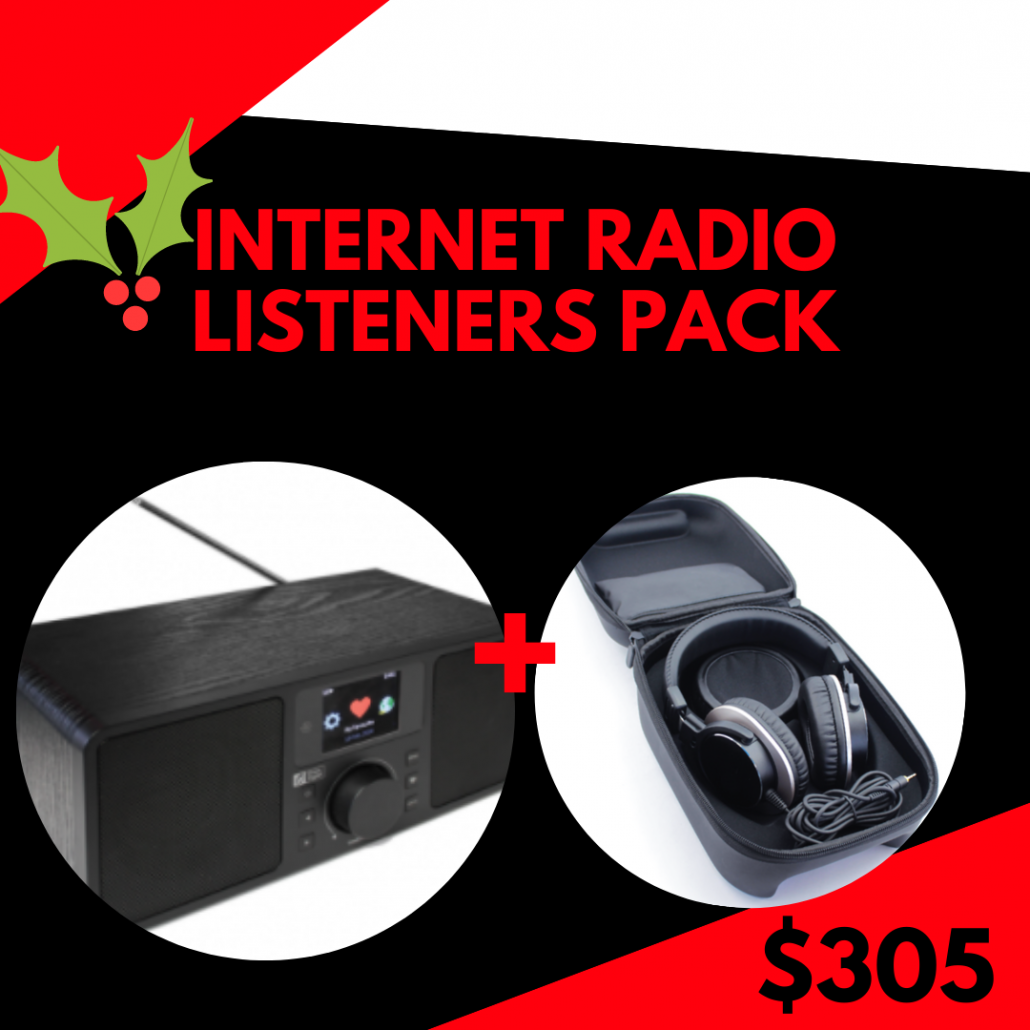
Internet Radio listening pack.Already a shortwave enthusiast but want to optimise your shortwave listening to world wide online stations too? This is the perfect pack featuring our stylish Apogee internet radio used in combination with our HiFi communication headphones for comfort and clarity! Simply connect to your existing internet service. You can turn up the music and not bother anyone else in your home!
Deal price $305 Normally $345
Travellers Companion Pack
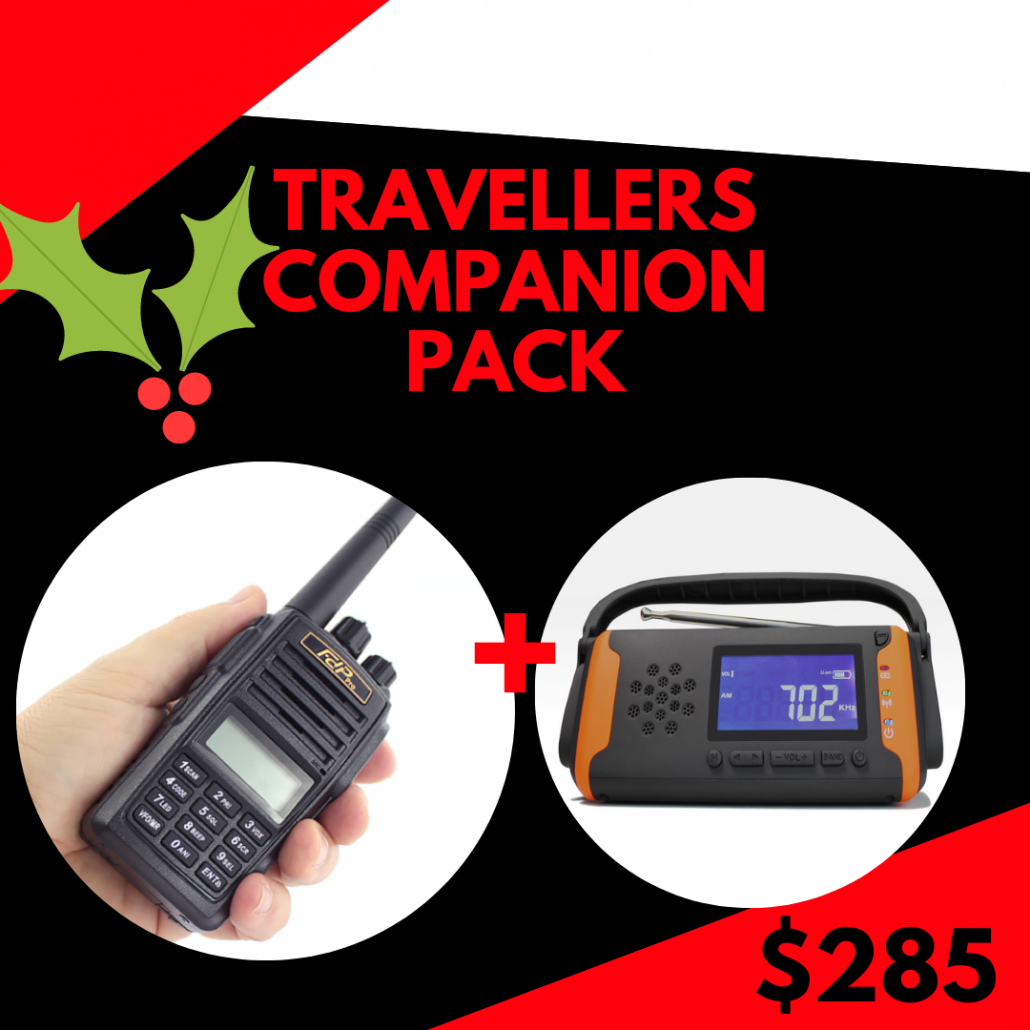
The FDPRO is perfect for travelling. Keep in touch with others in your immediate area, buy two units and keep in touch with the kids. Ideal for car to car communications, yet with the flexibility to keep in your grab bag in case of emergencies. Keep in touch over the CB band when you are on the go.
Accompany this with an Emergency radio that contains USB charger, emergency alarm and flashlight and you are set for the road and prepared for anything.
The perfect gift for people who may be about to hit the road travelling around Australia, those who live in rural areas or people who love to go camping and get out and about in nature.
Deal price $285, normally $305The DRM Pack
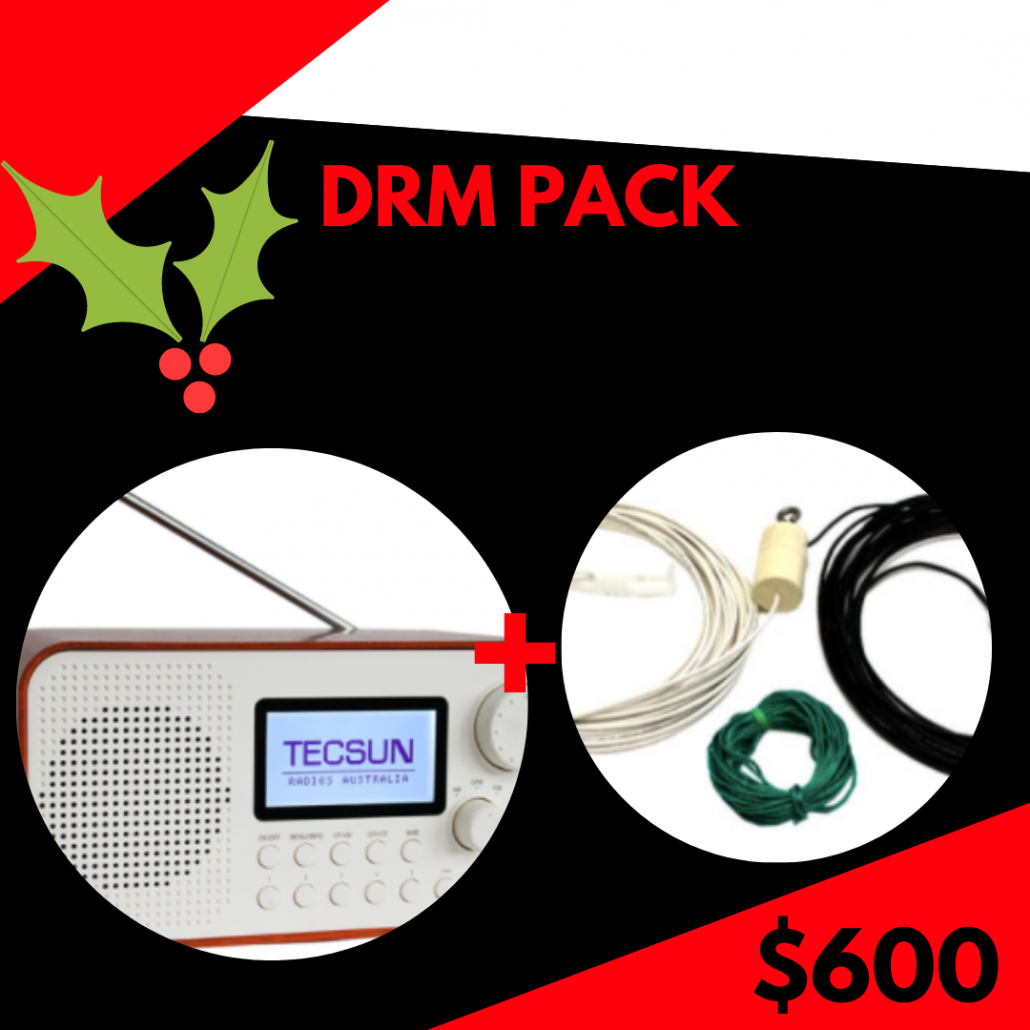
This fantastic pack broadens your listening to the digital radio world allowing you to both listen to shortwave and receive and decode DRM Shortwave Radio signals
Finally, a stand-alone Digital Radio Mondiale (DRM) Shortwave Radio has arrived and is available for DRM and shortwave radio enthusiasts to add to their collection.
The TRA Q-3061 DRM Shortwave Radio has been a long time coming and after evaluating dozens of samples over the years we have finally found a stand-alone desktop DRM radio that is suitable for Australian, New Zealand, and Pacific Islands listeners.
The TRA Q-3061 DRM Shortwave Radio is primarily designed to receive and decode DRM Shortwave Radio signals but the radio can also be used to receive traditional Shortwave (AM) broadcasts, FM, and AM (MW) broadcasts. The Tecsun Radios Australia Q-3061 DRM Shortwave Radio receives DRM, FM, and Shortwave (AW) signals via the inbuilt telescopic antenna, or for superior reception, the radio provides two dedicated external antenna BNC connections for DRM, Shortwave (AM), FM, and AM (MW) signals. On the FM band, this receiver also decodes RDS where broadcast. In slow tuning mode, the frequency step is reduced to 1 kHz. This is an advantage when tuning the extended MW band (530-1710 kHz) to receive specialised broadcasters in Australia.
The TRA Q-3061 DRM Shortwave Radio is for experienced shortwave users. There is a limited number of DRM signals available in our region although the total number of DRM broadcasts are increasing. This radio is squarely aimed at radio enthusiasts and DXers, most signals require an external antenna, experience, and patience.Included in this pack is the reception boosting Tecsun Shortwave and AM Outdoor Antenna which significantly enhances the reception of signals in the medium wave (AM) and shortwave antenna bands covering 0.5-30 MHz. The Tecsun Shortwave and AM Outdoor Antenna is based on a long wire antenna design but provides significantly improved reception over a long wire because the Tecsun Shortwave and AM Outdoor Antenna utilises a matching transformer that acts as a balun with a ratio of 10:1.
This pack is $600, normally $640Complete Hobby Radio Shack Pack.
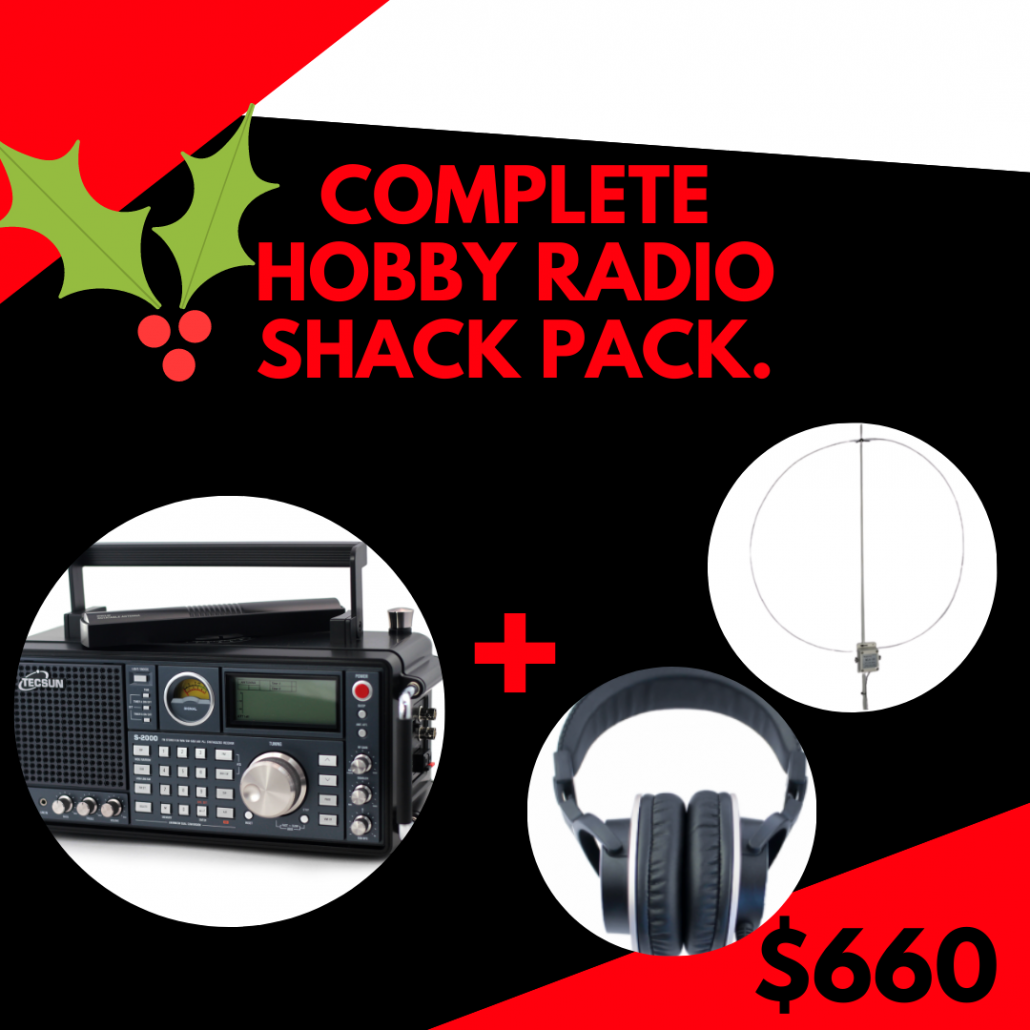
Receive huge discounts when you buy these products at the same time, simply add items to the cart and use the above code at checkout to get your discount!Go on, you deserve it. You have worked hard your whole life and now is the time you can dedicate to exploring the fantastic hobby that is shortwave. Beyond a man cave, a radio shack is a place you go to tinker, to tune and to uncover some of the world’s mysteries within one of the oldest hobbies around!!To complete your radio shack we recommend the following bundleThe S2000, a quality desktop radio that not only looks the part with its classic styling it also will enable you to tune in to SW, MW, AM and FM to follow your favourite stations and perhaps happen across a new broadcast you have ever heard before!Included in this bundle is the MLA-30+ Shortwave Loop Antenna that can be mounted indoors to boost the performance of your Shortwave radio and increase the number of radio stations and broadcasts that can be received.Once you have found your favourite stations simply program them into your S2000 and add your final accessory for the best and most comfortable listening possible. A pair of Tecsun hifi communication headphones. and add your final accessory for the best listening possible. Some Tecsun hifi communication headphones.Bundle and save, deal price $660, normally $710 when all 3 purchased together in one checkout.For those serious about Ham Radio
The New Ham
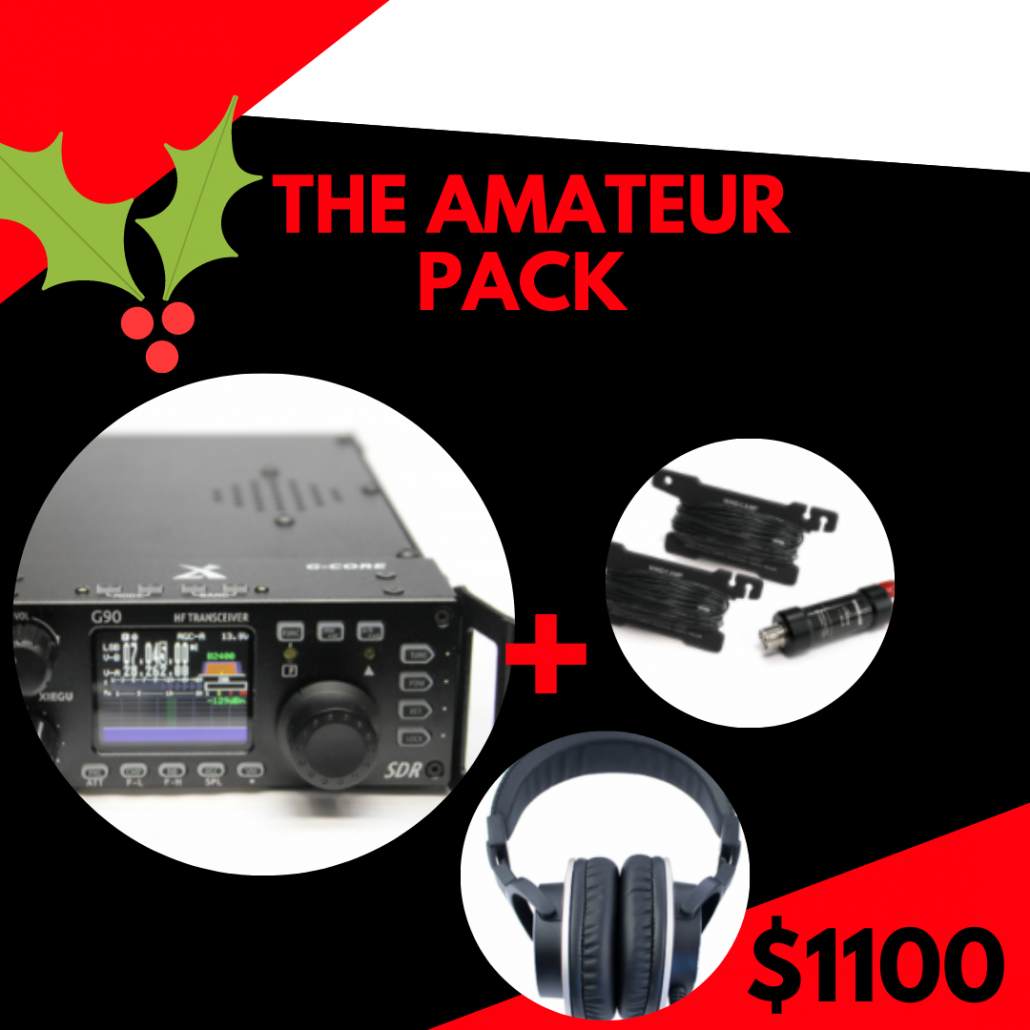
This pack contains everything you need to listen to shortwave radio.
Xiegu G90 + Antenna +Headphones Only $1100, normally $1167The star of this pack is the Xiegu G90, truly a world class radio transceiver. The XIEGU G90 HF Transceiver is a High-Performance Portable Amateur Radio Transceiver. This powerful portable HF multimode transceiver covers 0.5-30MHz (10-160 metres on TX) with 20 watts of RF output. The XIEGU G90 HF Transceiver utilises a software-defined (SDR) 24-bit architecture to provide superb transmit and receive performance.Use the supplied separation cable to mount the control head where you can see it and the transceiver out of the way, to maximise operating room in your radio shack.Improve your reception with The TRA HF Portable Dipole antenna is rated at 100 Watts PEP power handling capability. Featuring 10 metres of Rg58 cable for easy connection to most transceivers.Note: Best results will be obtained when the antenna is at least 4 metres above ground. In theory, the antenna should be at least a quarter wavelength above the ground for best results, so the height will correspond to the operating band. Generally, higher is better.Your final accessory in this pack is for the best and most comfortable listening possible in your radio shack. A pair of Tecsun hifi communication headphones. With memory foam ear covers and an extra-long cord to reach your radios.Bundle price $1100, normally $1167
OFFER VALID TILL MIDNIGHT DEC 24.
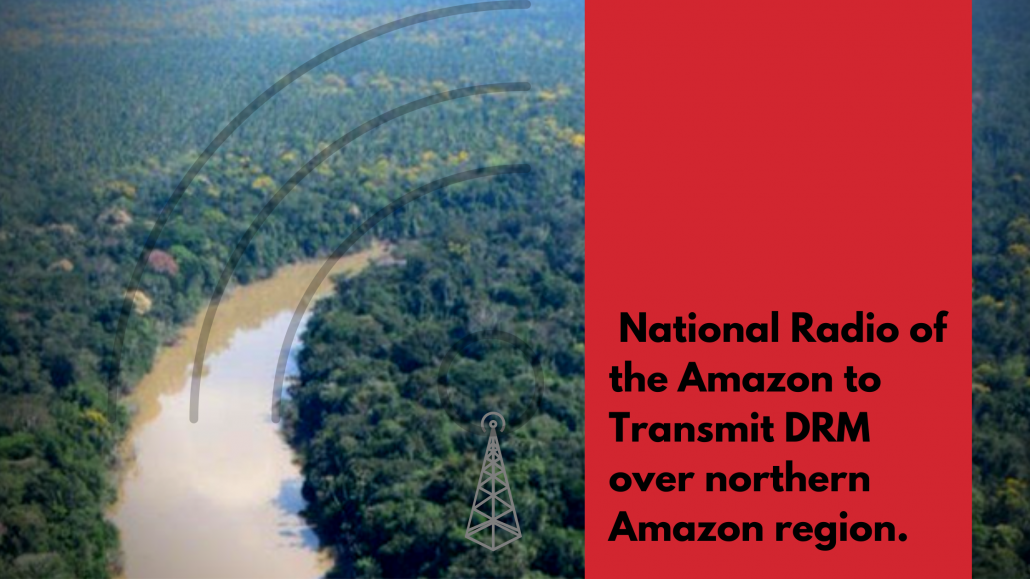
The People of the Amazon will soon be covered by DRM shortwave as National Radio of the Amazon orders a 100 kW BT transmitter
The vast area of the Amazon known as the Amazon Rainforest is the largest tropical ecosystem in the world, with rainforest covering roughly 40% of South America, stretching over ten countries in South America, and is almost as large as the United States! The rainforest is home to both large and small communities in very remote areas, some harvesting crops along the rivers and others in more secluded villages deep within the forests.
As you can imagine communication to these areas can be difficult so it was no surprise when at the end of last year, testing of DRM technology began using a transmitter of 2.5 kW with the digital power of just 1 kW.
Despite this low power of the transmitter supplied by BT Transmitters, recordings were reported from different regions of the country and even from North America and Europe.
As a result of these tests, the National Radio of the Amazon decided to use DRM shortwave transmissions to serve indigenous populations in the northern Amazon region.
At the sizable cost of $650,000 USD. Public broadcaster Empresa Brasil de Comunicação (EBC) ordered a 100 kW BT transmitter to broadcast in DRM at 11,780 kHz in the 25-meter band, an existing shortwave channel used by Rádio Nacional da Amazônia.
This is considered to be the first domestic DRM installation on a locally produced transmitter in Latin America.
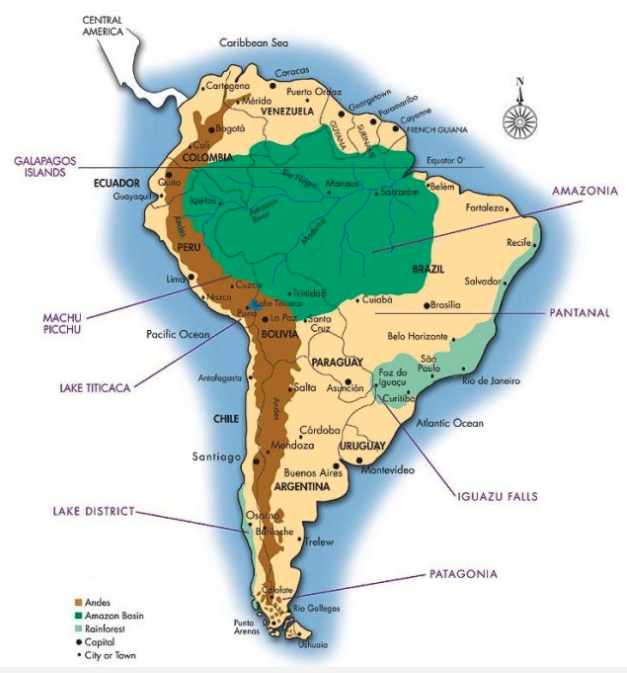
Information from The Digital Radio Mondiale Consortium.
Image via https://amazonaid.org/
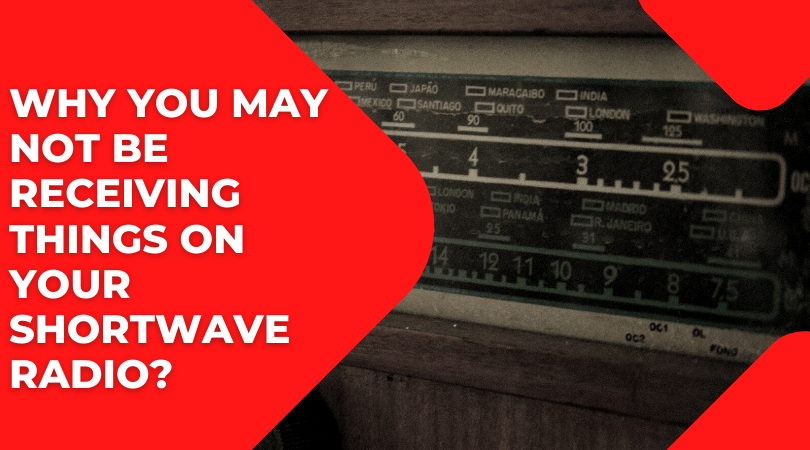
You just got your new radio. You excitedly unbox it and put in your Tecsun batteries, you turn it on, and there’s the sweet sound of….. Silence 🙁
What could be wrong? Is my radio broken?
Chances are it is not broken, here are several things it may be.
The first one may be noise, yes noise! Unfortunately, every single electrical item in your home emits a frequency, particularly modern items, especially if you live in a densely populated area. There may simply be too much noise dominating your area.
If you have a portable radio you could try troubleshooting it yourself. Simply walk around the home to find where you receive a signal and also where it is being interfered with. We had one customer just the other week who did this and realised the light dimmers were creating interference, light dimmers!! Sometimes it’s the microwave, sometimes it’s a power outlet. Radio signals cannot penetrate the metal walls of your shed, nor the foil-lined roof of your house! Taking the radio outdoors to try and receive a signal is one way of eliminating the effects of interference. If this is successful, the next step is to investigate an external antenna.
The Tecsun Outdoor Shortwave and Medium Wave Antenna is one solution. This gets the receiving ‘element” further away from the noise source, it is then matched to the transmission line and the radio is then fed with a coaxial cable. Compared to a straight piece of wire of the same length, this antenna offers a huge improvement in received signal level. If you do not have room for an external antenna, an “active loop” antenna might be your solution. These can be erected on a balcony or even fixed tothe glass of a window.
Another reason you may not be receiving shortwave is the time of day. Unless the specific broadcast is aimed at Australia, most international shortwave broadcasts will occur during daylight hours for the listening audience. So depending on the broadcaster, this might be in the middle of the night for us shortwave enthusiasts. Check some of the available shortwave radio schedules on the internet to see who is broadcasting when you are listening. In Australia, at this time of year there are many shortwave stations operating around 9Mhz most mornings, by mid-afternoon, many have shifted to 13-18Mhz for the evening.
Time signals are one reliable signal source. They are on air constantly 24 hours a day. Their signals on 10.00Mhz and 15.00Mhz are easiest to hear, and this will confirm the correct operation of your receiver. These signals are also ideal for comparing reception results between antennas. It is also possible to check the signal of a shortwave broadcaster using the Tecsun Radios online SDR. Click here for access.
Perhaps during the time you are tuning there is a geomagnetic storm or a solar flare that may be causing a temporary weakened signal.
It may be that a setting on your radio needs changing. Many radios have a button for “local or DX”. If your switch is on local it may not receive weaker stations.
Experiencing issues setting up your shortwave radio ? Garry at Tecsun Radios Australia is here to help guide you through the troubleshooting process if needed.
It is all part of why we are different here at Tecsun Radios Australia.
In fact with every radio purchase from Tecsun Radios Australia, you receive a listeners guide which includes a very comprehensive and practical guide to locating sources of AM and HF interference! You can view this guide here
The main thing to remember is dont give up ! Shortwave listening is like fishing, you never know what you are going to catch! Equipping yourself with a good receiver and antenna, are the first steps towards being able to regularly enjoy shortwave listening, the only live and uncensored source of international news and events.
One of our most popular portable shortwave radios is the Tecsun PL880. It comes in both the original and the deluxe edition with a stylish and durable hard case to keep your radio safe, shockproof, and moisture-free in storage or whilst traveling.
The top features of the PL880 are digital signal processing on the HF band (in all modes), a quantum leap forward for the reception of weak signals. In addition, the Tecsun PL880 Radio offers 9 user-selectable IF bandwidth settings for communications enthusiasts, and a new long-life lithium-ion battery.
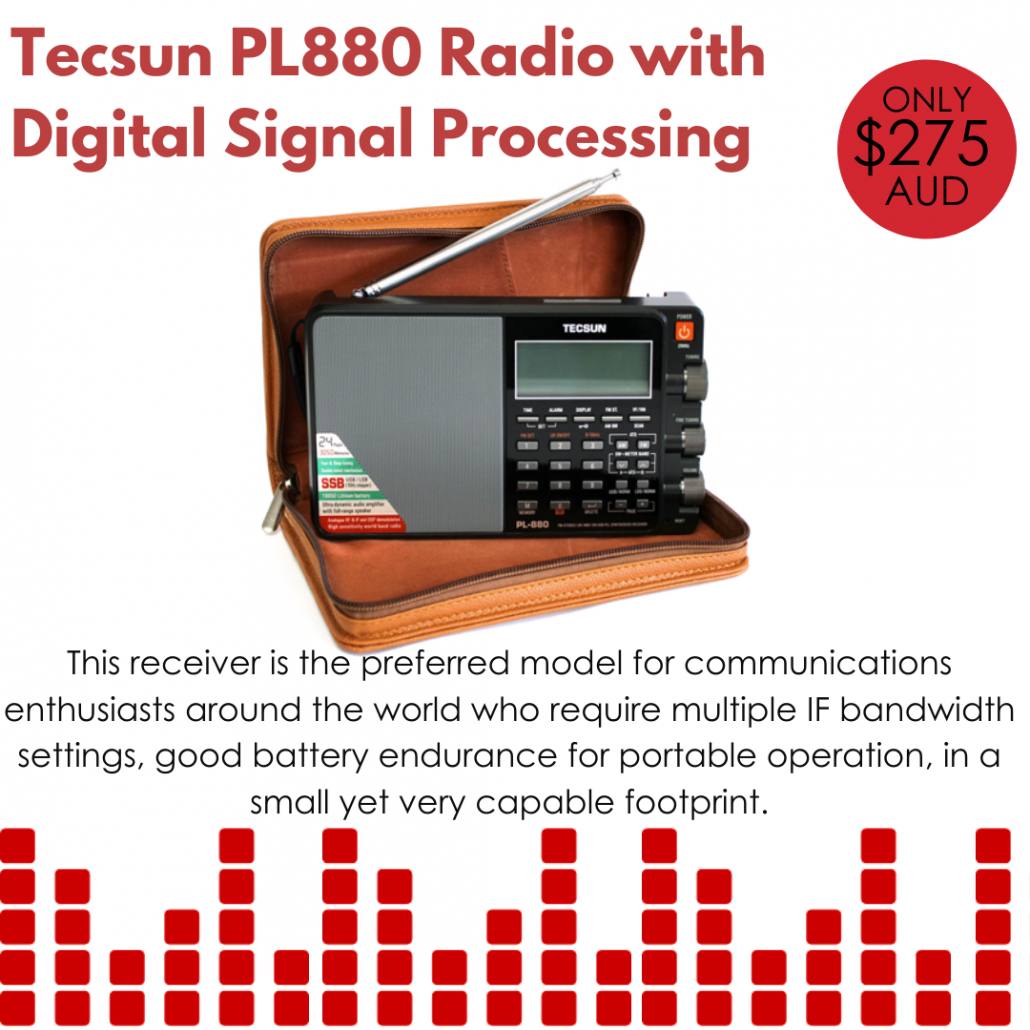
The receiver covers the entire shortwave range (100-29999KHz), Longwave, FM and AM broadcast bands. Receiver sensitivity on HF in the SSB mode is typically less than 1uV. Upper Side Band and Lower Side Band are individually selectable, and there are multiple user-selectable bandwidth settings available for each band.* The receiver is equipped with an external antenna socket to allow connection of an external antenna for the Shortwave bands for enhanced reception.
Speaking of External antennas. To improve your reception we highly recommend the Tecsun shortwave and AM outdoor antenna.
The Tecsun Shortwave and AM Outdoor Antenna significantly enhances the reception of signals in the medium wave (AM) and shortwave antenna bands covering 0.5-30 MHz. The Tecsun Shortwave and AM Outdoor Antenna is based on a 10 metre longwire antenna design but provides significantly improved reception over a basic longwire because it utilises a matching transformer that acts as a balun with a ratio of 9:1. This provides an optimal match between the 500 ohm impedance of the antenna and the 50 ohm impedance of the receiver, greatly increasing the amount of signal provided to the tuner.
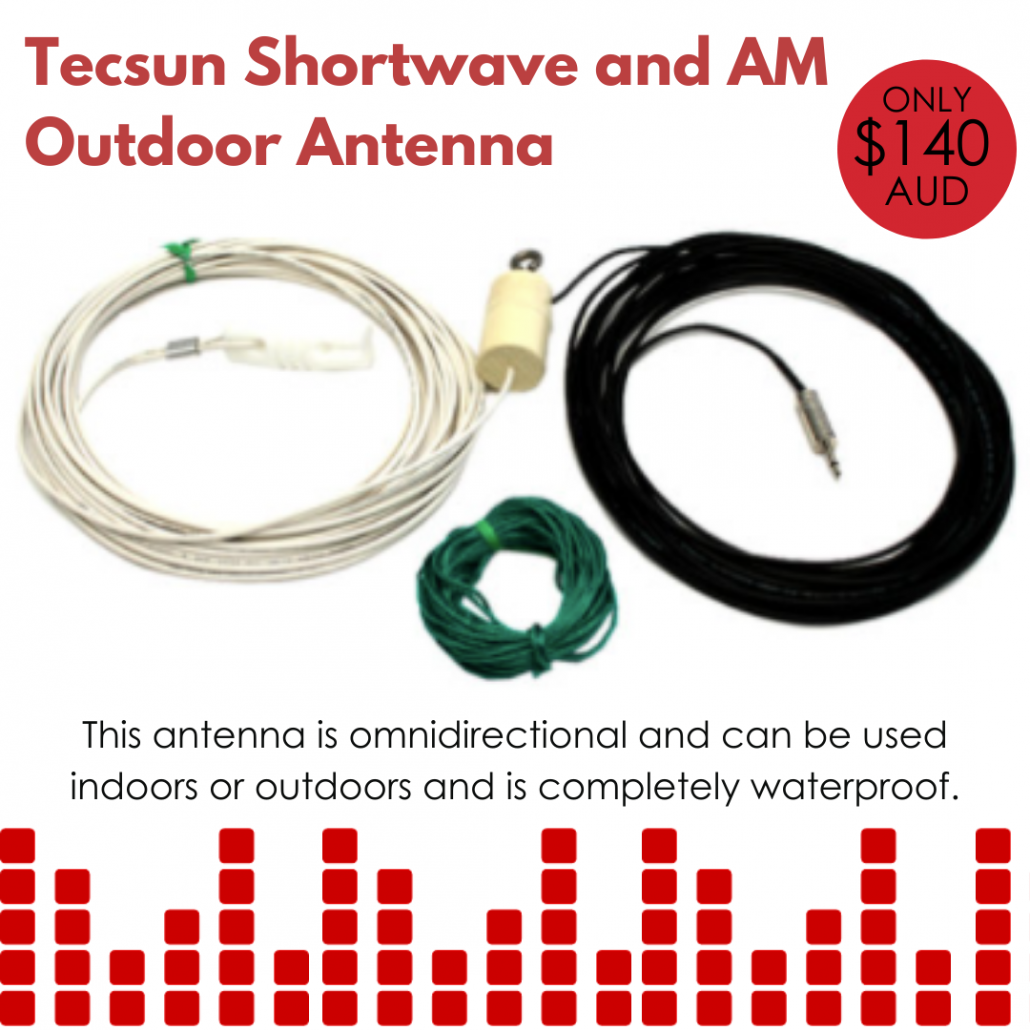
The MLA-30+ The MLA-30+ Shortwave Loop Antenna is an affordable active loop antenna that allows people without the luxury of a large backyard, to use an external antenna to boost the performance of their Shortwave Radio radio and increase the number of radio stations and broadcasts that can be received. The MLA-30+ Shortwave Loop Antenna can be mounted indoors on any non-conductive rod or tube, such as PVC conduit or fibreglass rod (not metal). The loop element of the MLA-30+ Shortwave Loop Antenna has a diameter of 60cm and is connected to the active amplifier housing by two stainless steel wing nuts. For portable operation, the MLA-30+ Shortwave Loop Antenna can be powered by a standard USB powerbank.
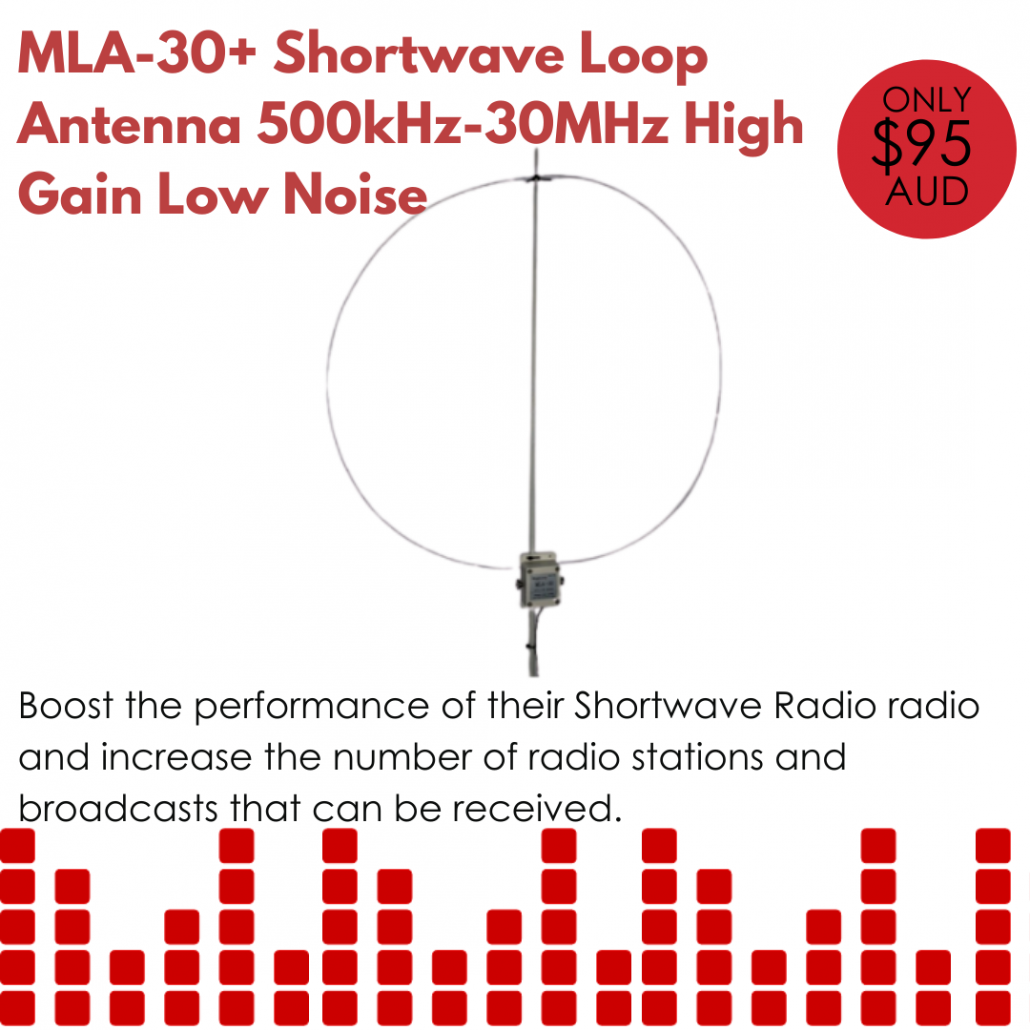

We all love to communicate, why not take a trip around the world with radio!! No internet connection or mobile phone signal is needed! Talk to other amateur radio operators across the world, maybe even in unusual places or as far as space!
Yes, that’s right, the international space station carries amateur radio equipment on board and there are always licensed amateurs among the crew who enjoy using it to communicate with operators all over the world. Youtube features several recordings of amateur radio operators communicating with space crew!
What to listen to
You can listen to local radio stations from around Australia, and even the world via shorwave.
HF aircraft channels, weather reports, and amateur radio nets. For those new to listening on the HF bands, nets are an ‘on-the-air’ gathering of amateur radio operators. chatting and passing messages, normally via organised radio nets, on a predetermined frequency at the same time every day.
These nets can range from discussions on areas of interest, to emergency messages or simply as a regular gathering of friends for conversation.
Here are some of the most common radio nets.
DX Nets
DX nets are one of the most fascinating and are often organized to help amateur radio operators make contact with stations in distant locations or regions where amateur radio operators are scarce.
Imagine randomly tuning across amateur bands and being able to listen to another station you may not normally be able to hear, by simply tuning into a DX net.
Club Nets
Amateur radio clubs organise nets between members on a regular basis. The topics are often of special interest and can vary from vintage radio equipment, locating unique stations in Australia and around the world, using and discussing the AM mode of voice transmission and many more.
These nets foster communications members across geographic locations and special interest clubs, and make fascinating listening for shortwave enthusiasts, whilst providing an open communications link for those in isolation.
Traffic Nets.
Traffic nets operate primarily to relay written messages. Both routine and emergency messages have been passed on behalf of others as a public service mission for decades.
Often used for training purposes or during emergencies such as natural disasters when there are power outages traffic nets are used to pass on crucial information to the affected areas. Often relayed by emergency services or ham radio users where possible.
If you are looking to add a shortwave radio to your collection we have a fantastic selection available on our webshop like The Tecsun PL880 Radio
*Info from the Wireless Institute of Australia
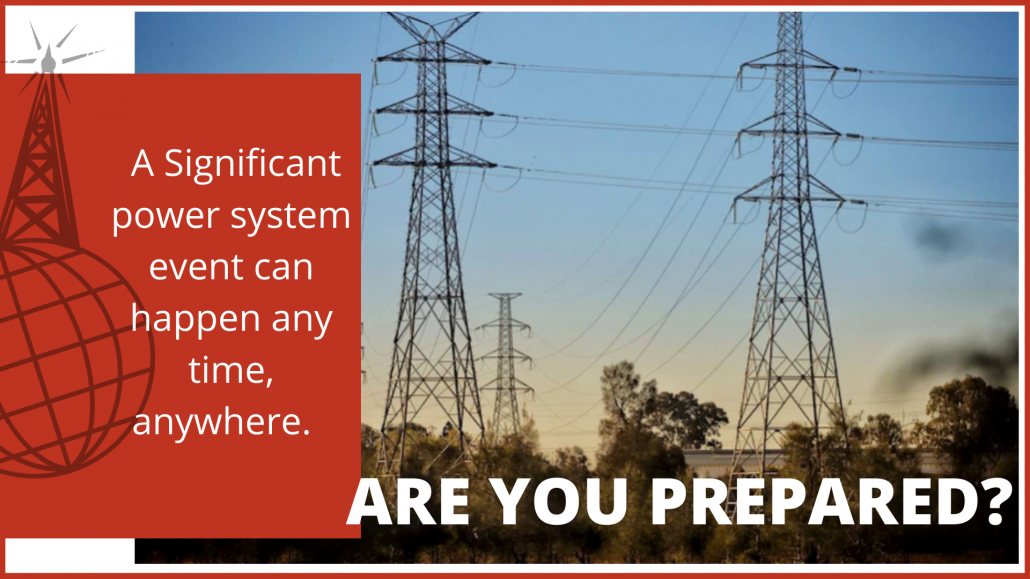
image via Image via https://www.abc.net.au/news/
At 2 pm on Tues 25th May 2021, a fire broke out in a turbine at the Callide power station in Central QLD causing three generators to be shut down. The scenario of a hydrogen-filled generator exploding or failing mechanically causing hydrogen leaks and then also oil leaks, is probably the worst-case scenario in a coal-fired power station, according to Union representatives.
A further domino effect followed, tripping plants further down the network and causing an electricity outage of almost 500,000 homes from northern New South Wales up to far north Queensland.
Chaos ensued with a black-out affecting hundreds of thousands of homes, the Brisbane city traffic lights, shopping centers, sewage treatment plants, and even Gold Coast trams.
The Australian Energy Market Operator (AEMO) requested consumers in Queensland temporarily reduce their energy usage where safe to do so
Thankfully nobody was injured by this incident however, this is a stark reminder that significant power events, similarly, significant weather events ( the two are often related) can occur anywhere at any time.
Is your home prepared for such events?
How to prepare yourself for a power outage.
A severe power outage can last for days, so its a good idea to set aside a day once a year to spend 10 minutes making sure you are prepared if the sudden event of a power outage occurs.
Take an inventory of the items you need that rely on electricity. Plan for batteries and other alternative power sources to meet your needs when the power goes out, such as a portable charger or power bank. Have flashlights for every household member. Determine whether your home phone will work in a power outage and how long battery backup will last.
Make sure you have an emergency radio that can be hand-cranked or solar powered so that you can receive essential emergency broadcasts and instructions when other forms of communications are down. Many top emergency radios feature additional safety features including a flashlight, emergency alarm to attract attention and USB charging.
How to protect yourself during a power outage.
- Disconnect appliances and electronics to avoid damage from electrical surges. Turn off or disconnect appliances, equipment, or electronics. Power may return with momentary surges or spikes that can cause damage.
- Use a generator if you have one, but ONLY outdoors and away from windows to minimise exposure to carbon monoxide.
- Do not use a gas stove or oven to heat your home.
- Keep freezers and refrigerators closed and have alternate plans for refrigerating medicines or using power-dependent medical devices.
- Tune into your local radio emergency broadcast for updates and directions if you are in an effected area
- Grab your emergency kit and keep it close.
Thank you to ready.gov for these tips.
Emergency kits are essential in every household, because you don’t need them till you do.
Do you have an emergency kit prepared at home? Click here to see the full list of what essential items you will need to have packed and ready to go. What is in an emergency kit.
Don’t have an emergency radio yet?
We recommend the Best Emergency Radio which is our highest performance AM/FM/SW Solar Powered Radio with inbuilt Solar Panel and Hand Crank Dynamo Charging. Additional features much needed during an emergency are a LED torch and personal alarm, a siren to gain the attention of emergency services and an inbuilt USB charger.
We recommend the DE13 Emergency AM/FM/SW Solar Radio which is an economy model, featuring a torch, personal alarm, inbuilt Solar Panel, and Dynamo hand crank charger that allows you to recharge the internal battery or charge any device by USB or mini USB including your mobile phone. This is the perfect radio to keep for any emergencies.
Click here to shop these products in our online store.


